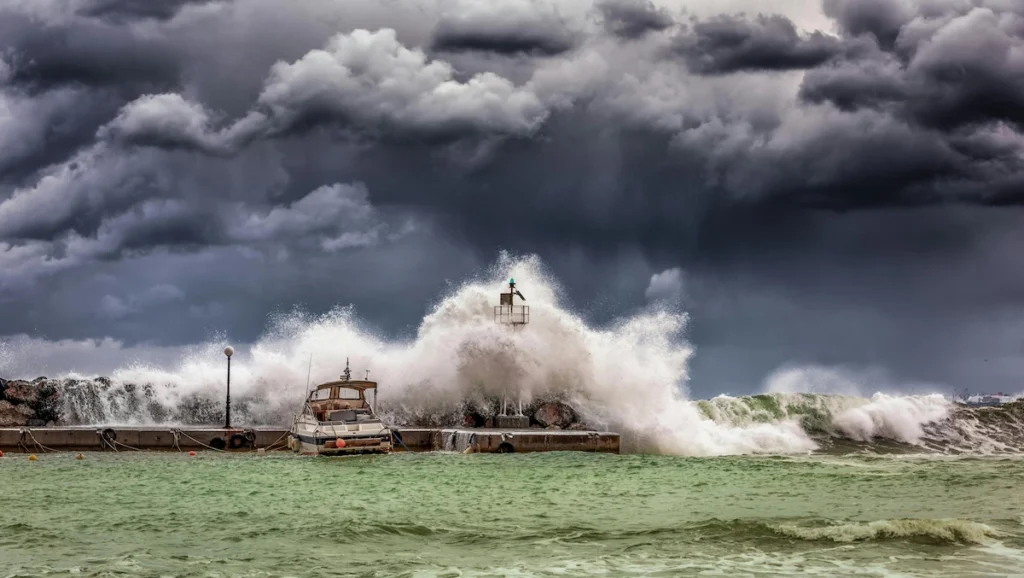Introduction
A magnitude 6. 7 earthquakes that struck offshore New Zealand on Monday and triggered a regional coastal warning. The New Zealand Earthquake Commission (EQC) said in a statement posted on the Next Web site that the quake hit at approximately 2:00 PM local time and was centered 200 km southeast of Wellington. Officials have urged residents to be alert as aftershocks may come.
Insights
- On 25 March 2025, a magnitude 6.7 earthquake occurred off the coast of New Zealand.
- The quake struck 200 kilometers southeast of Wellington at a depth of 50 kilometers.
- Wellington: A warning was issued, advising coastal evacuation of low-lying areas.
- Aftershocks of up to 5.3 in magnitude were reported, leaving the authorities on high alert.
- The quake’s epicenter was deep, reducing the tsunami risk, but emergency services are remaining vigilant.
- So far, there has been no significant damage or loss of life, but officials are assessing.
- The quake has highlighted New Zealand’s seismic vulnerability, especially in places like Wellington and Auckland.
Background
New Zealand lies along the Ring of Fire, becoming an area with high seismic activity; most earthquakes and volcanic eruptions do occur. The latest tremor was not unusual for the country, which has a storied history of strong earthquakes, including the 2011 Christchurch earthquake that resulted in much destruction and loss of life. It is also corrugated with several fault lines, including the Wellington Fault and Auckland Fault, and Geological and Nuclear Sciences (GNS) has been closely monitoring the region for years. The new tremor comes on the heels of a sequence of more minor quakes in the area that raised alarm for local authorities and residents.
Main Event
The earthquake occurred at a depth of 50 kilometers (approximately 31 miles) beneath sea level, which lowers the chances of a tsunami but threatens coastal regions. New Zealand Civil Defence also issued an urgent coastal warning for Wellington and surrounding regions, urging people to evacuate low-lying coastal regions, in case aftershocks are experienced. During the subsequent hours after the initial quake, aftershocks occurred, among them a 5.3-magnitude aftershock, and the authorities were put on high alert. Some ports and tourist areas were closed temporarily for precaution.
Emergency services were dispatched to search for damage, especially along the coast, but no early reports of serious damage or injuries. The epicenter of the quake was deep, experts warned, so it did not result in much damage but its closeness to Wellington made it an event of significance to the region. Local enterprises, especially those in tourism, were urged to prepare for likely disruption from ongoing seismic activity.
Implications
The earthquake’s impact extends beyond the real threat of damage. The New Zealand government has repeatedly pointed out the importance of training for such an eventuality. Public awareness campaigns on “how to prepare for an earthquake” are likely to be the new buzzword in that region in the wake of this tremor. These were short-term closures, though, and tourism and transport services were interrupted and are expected to resume in the short term. As things develop in an evolving pandemic, insurance claims for property damage or service disruption might also rise, he said.
Due to the coast warning, the affected communities are still on the watch, and businesses and residents in the area are still obeying the official warning. The tremor has also raised fears of more powerful quakes in the days to come since the region is open to seismic action.
Conclusion
While the immediate danger has subsided, the coastal warning from the authorities highlights the hazards that New Zealand’s seismic environment still poses. As the country grapples with the fallout, experts are urging residents and visitors to err on the side of caution. Local officials will assess the damage and offer updates where appropriate.



